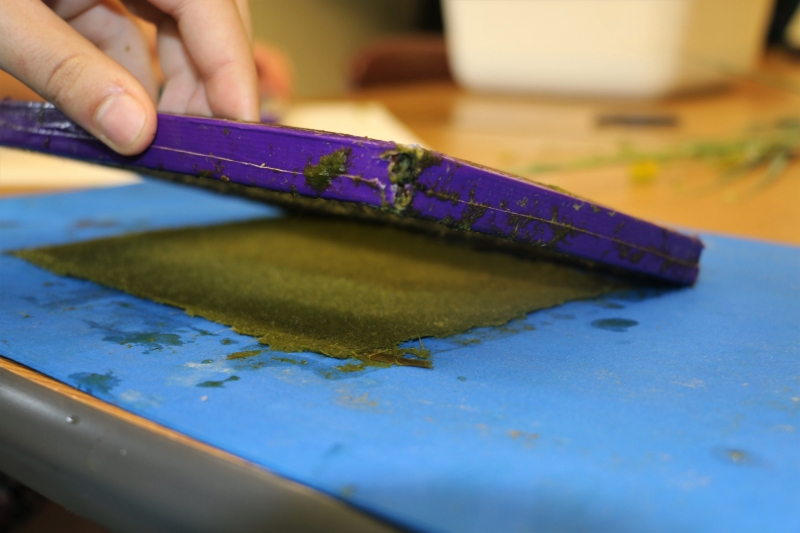
How to Make Paper with Invasive Plants
Don’t know what to do with the invasive plants in your backyard? You can make paper!
Making paper may seem like a foreign idea. You probably use paper every day, but likely haven’t made it from scratch. Making paper from materials in your backyard is easier than you think. Learning about invasives plants is also a great way to be an environmental steward. We can also create awareness of invasive species in many ways and one of those is by engaging in this creative activity. Making paper out of invasive plants helps create a sense of awareness on the role they play in our environment while giving us another perspective on how we think about these plants. Pass on what you learn to friends and neighbors!
For this How-To video, we used Common Reed (Phragmites Australis) which is an invasive plant phragmites and cooking with soda ash to make the plant into a pulp. Once you have the pulp you pour it into a frame and leave it to dry to create a sheet of paper.
You can make paper from almost any plant that contains cellulose fiber. It’s true that some plants make better paper than others, color, texture, and quality of your paper strongly depends on the fiber you start out with. Phragmites makes a warm, light brown paper that is surprisingly strong and rattly.
DIRECTIONS
1) Harvest stalks from a reed-like plant. We recommend using phragmites or another invasive reed. Make sure you have permission to collect the plant!
2) Cut stalks into 1 to 2-inch pieces.
-
Scissors.
-
The papermaking process will result in a big reduction in the amount of fiber from beginning to end. Cut more than you need.
3) Boil with a caustic solution & water.
-
This removes lignins and other material from the cellulose fiber, making your paper stronger.
-
We used washing soda. Use 1 tablespoon of soda ash to a 1/4 lb.
-
Boil outside, or in a very well ventilated area.
-
Check every half hour. Once the fibers pull apart easily, your fiber is done cooking. Don’t cook it so long that it turns mushy.
-
Crockpot
4) Rinse, Rinse, Rinse!
-
You must rinse your fiber well, to rid it of any caustic solution. Your water should run clear.
5) Beat into a pulp
-
You can use a kitchen blender (again, use your paper blender only for papermaking).
6) Make paper sheets!
